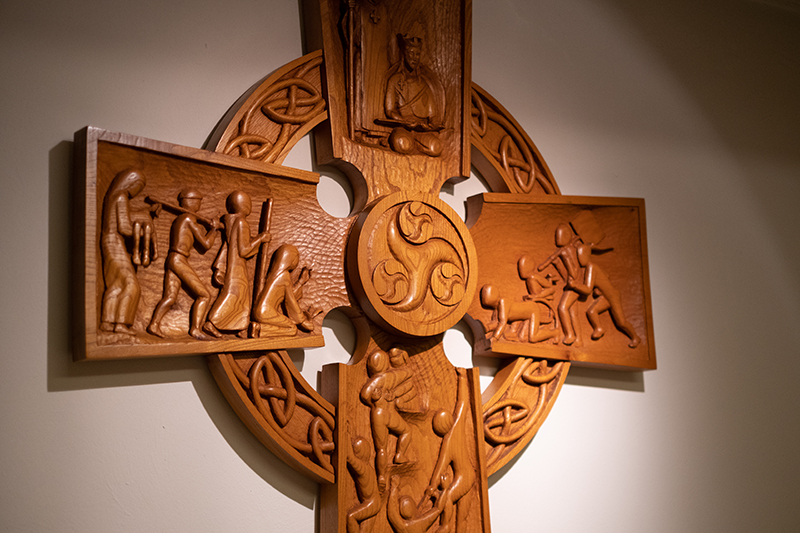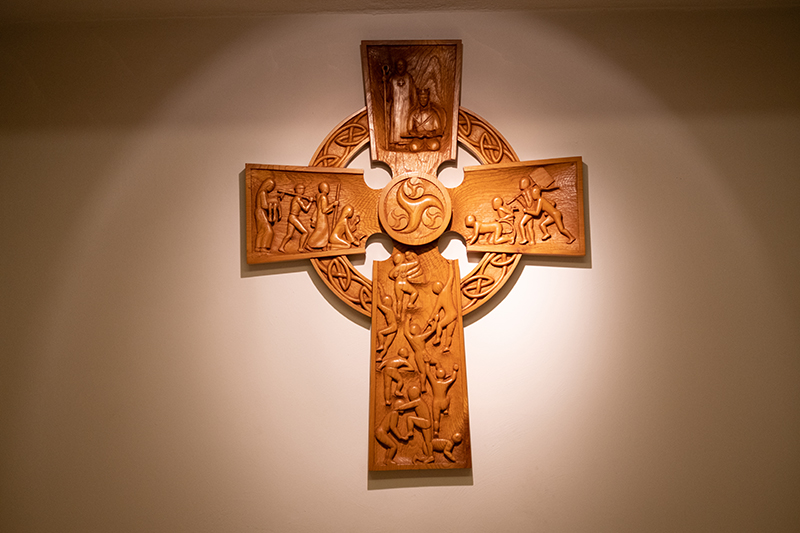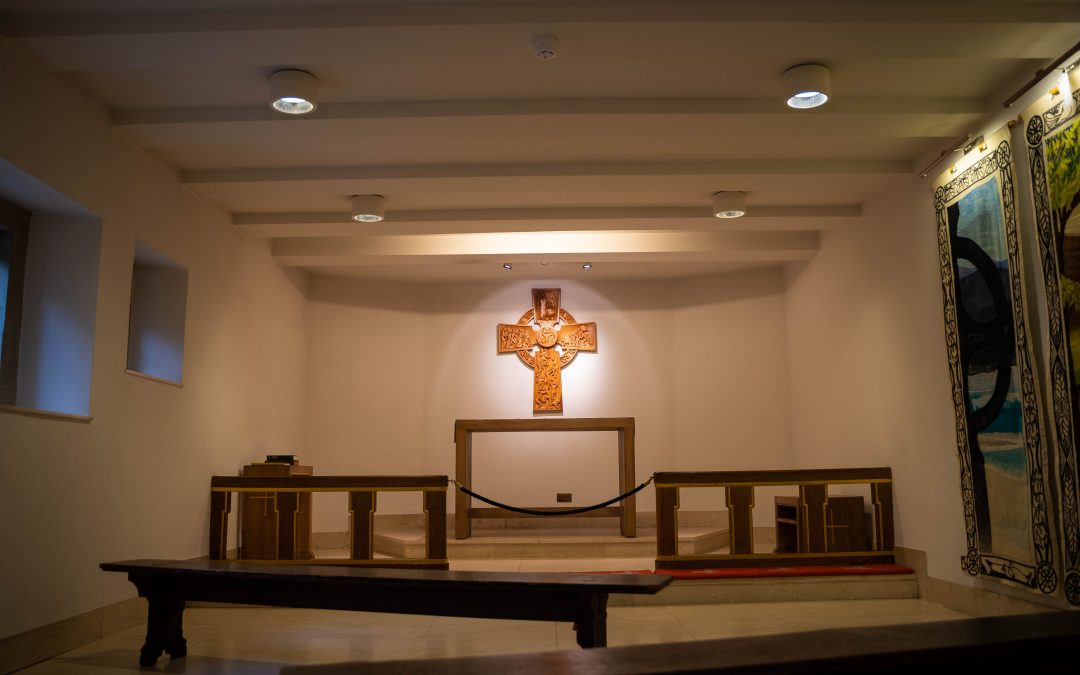Early Christianity in the North of England

This cross tells part of the story of one of the earliest people to bring Christianity to the north of England, Aidan.
The top of the cross, shows Bishop Aidan and the King of Northumbria, King Oswald. Aidan and Oswald are two of the earliest British saints (a saint is someone who is a role model for other Christians, someone who lived a good life and tried to do what God wants people to do).
Aidan lived from about 590 until 31 August 651. He was an Irish monk and missionary who is said to have restored Christianity to Northumbria. In 635 he moved from Iona to Northumbria, and with the help of King Oswald, founded a monastery on Lindisfarne and served as its first bishop.
Oswald’s Northumbrian kingdom was small, but diverse. One could hear at least four languages within the kingdom’s borders and there was a mix of churches and pagan sites dotting the landscape. The King was a Christian and wanted his people to be Christian, so he asked the monks of St. Columba’s monastery on the Island of Iona to send him a helper, this ‘helper’ was Aidan. Between them Oswald and Aidan established Christianity in the north east of England and parts of Scotland.

On the left arm of the cross are images from today, people in need across the globe in developing countries; on the right are images of people struggling for equality and freedom from suffering and want in the modern, developed world. The lower part of the cross shows people of the past, the present and the future sharing their faith and journeying towards God.
The centre of the cross shows an old Saxon and Celtic symbol for the Trinity; Christians describe God as three in one God the Father, Son and Holy Spirit. This Triquetra is a way of showing this belief in a symbol. The two entwined ropes that make up the circle around the outside of the cross presents the spiritual and the earthly existence of every person. The circle itself reminds Christians of the one God, a belief central to the faith.
The Saxon stone cross fragment outside Saint Aidan’s Chapel, may have belonged to a cross that was very much this shape, carved by Christian craftsmen some 1,300 years ago. So St Aidan’s cross although modern, is itself based on an earlier Christian tradition and is a reminder of the Christian heritage and history of the north of England.


The Cross lovely and telling stories simply and Uumpacked with very clear explanation in lay peoples language
Thank you for reading and your kind words!